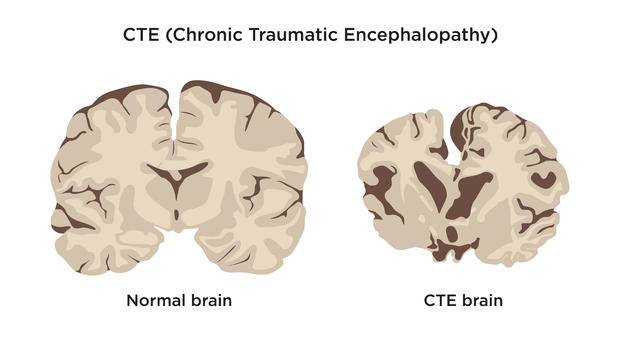Former Broncos WR Demaryius Thomas suffered from CTE
Former Denver Broncos wide receiver Demaryius Thomas suffered from CTE, or Chronic Traumatic Encephalopathy, a chronic degenerative brain disease. That's according to researchers from the Concussion Legacy Foundation at Boston University.
Thomas died last December at age 33, and his official cause of death has still not been officially determined.
His family donated the retired Pro Bowl receiver's brain for study, and it was that research that discovered Thomas had Stage Two CTE at the time of his death. However, it's not believed that CTE was the cause of death, but more likely caused by a fatal seizure. That seizure was the latest in a series of seizures that began after Thomas was injured in a serious car crash in 2019. Researchers say CTE is not associated with seizures or is a cause of sudden death.
Instead, CTE has more of an association with memory problems, as well as personality and behavior changes. Thomas's family say that he definitely showed signs and symptoms, particularly anxiety, and paranoia, and at times would isolate himself from others.
There are thought to be four stages of CTE:
Stage One- Headaches and "foggy" thinking.
Stage Two- Mood changes, anxiety, depression, memory issues, and at times, erratic behavior.
Stage Three- Increasing aggression, paranoia, and suicidal thoughts.
Stage Four- Symptoms that mimic Alzheimer's and other dementia, as well as Parkinson-type symptoms.
It's thought that the stages develop over time and are the result of an accumulation of "micro traumas" to the brain. In other words, repeated hits to the head. And hits that are NOT aren't necessarily severe enough to be diagnosed as concussions. As these micro-traumas heal, they leave behind a severe type of scarring caused by a protein called "Tau" that blocks blood flow and nerve messages between brain cells.
CTE was first identified in the 1920s, initially in boxers, who were labeled as being "punch drunk." Since, it's been seen in football players, hockey and soccer players, and even a bobsledder.
Unfortunately, there are no scans, blood tests, or other special equipment or exams that are a reliable way to diagnose the disease.
The diagnosis is made after death, and then, only if the brain is studied.
It is thought the more blows to the head, the more likely a player is to develop CTE—and even after the blows to the head cease—the disease continues to progress. In other words, a player can stop playing and still have the damage continue.
One study showed that in football, the risk of CTE doubles with every five years of play.
And that begs the question to parents: How safe are certain youth sports, particularly football? The researchers in Boston, among others—including former players, say the earliest a football career should begin is age 14.
Yet here's another question: what about athletes who play for decades and does not go on to develop clinical CTE.
You also need to ask --how many "repeated blows" are too many. Is there a set number? It may depend on the individual.
Bottom line: even for people who study the disease, there are still a lot of questions about CTE, but not enough answers.







